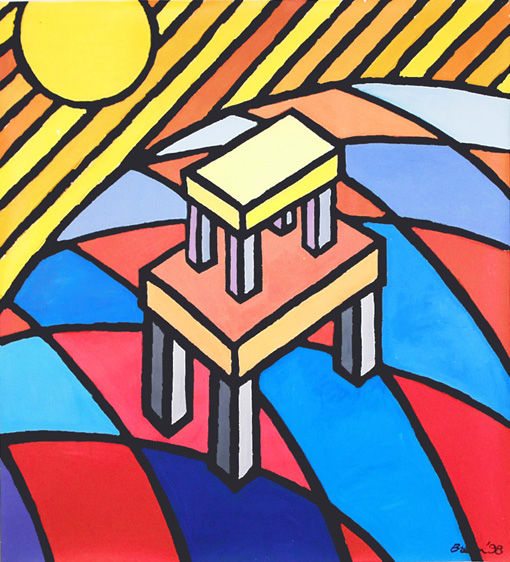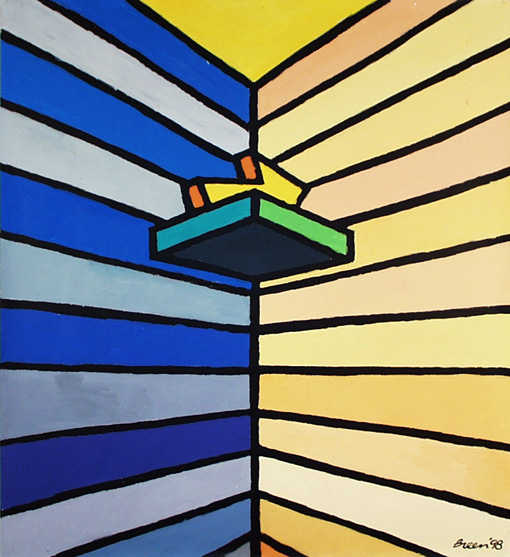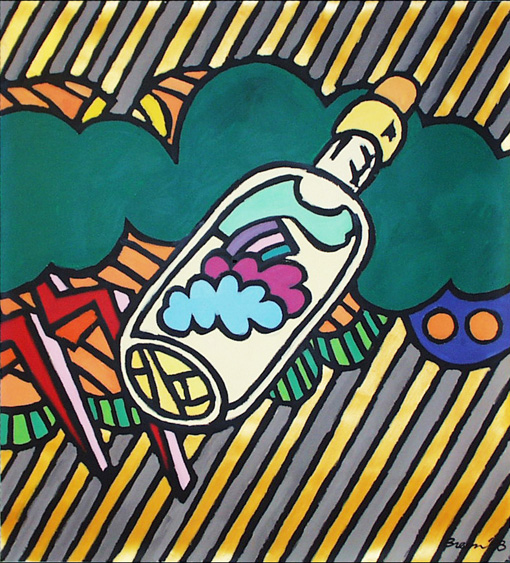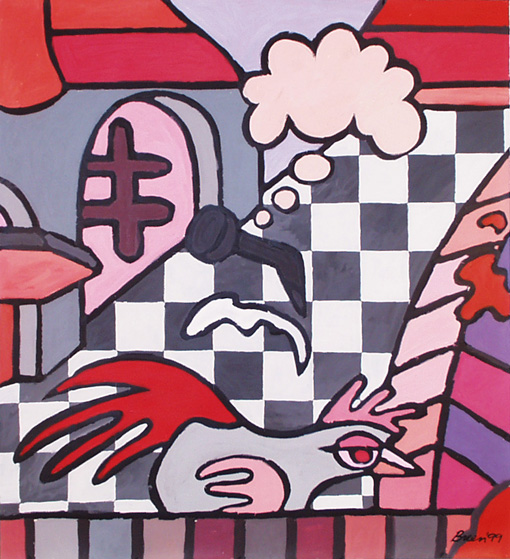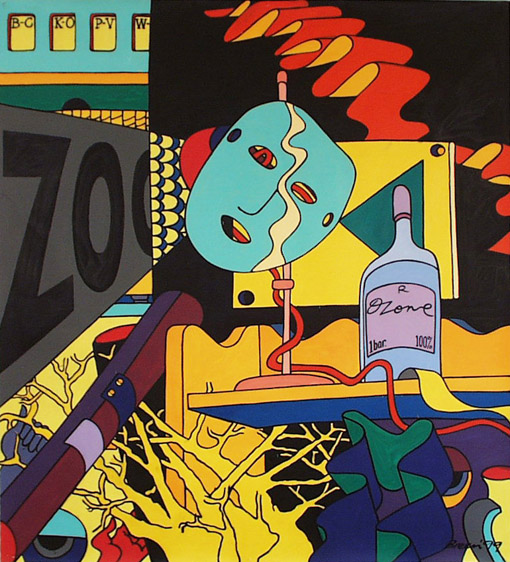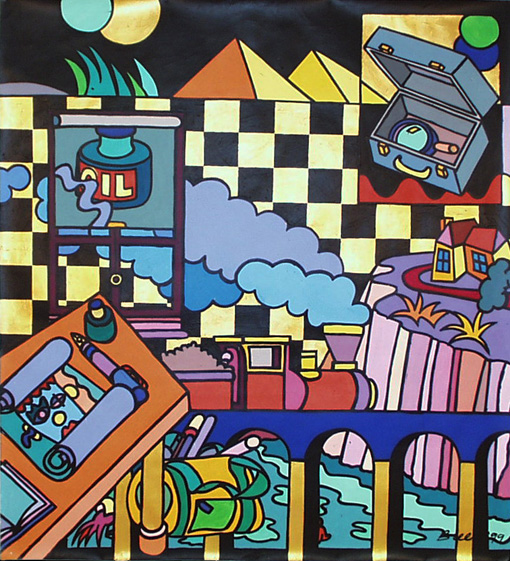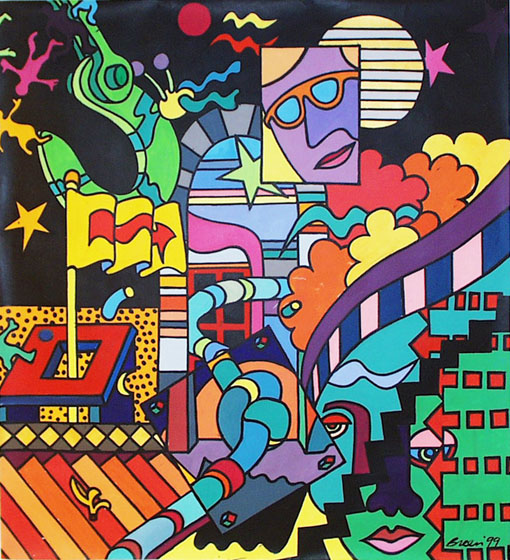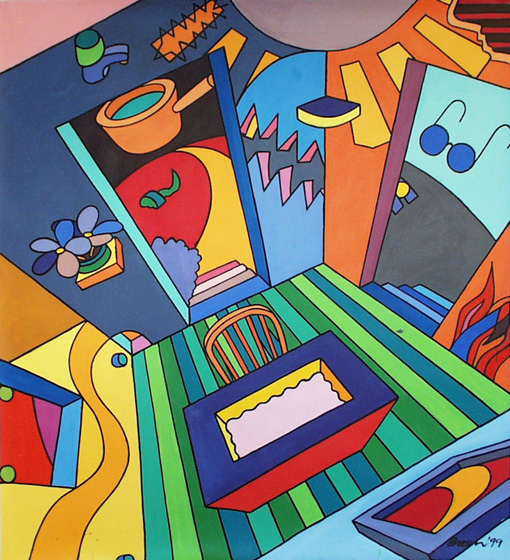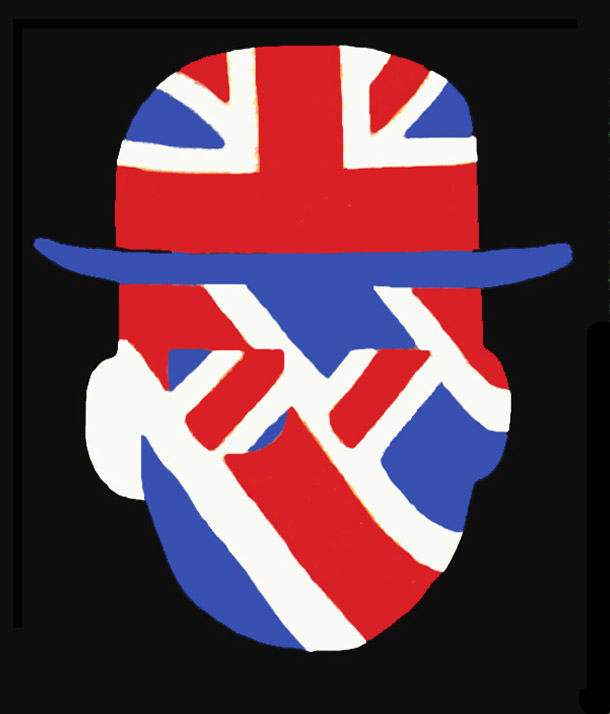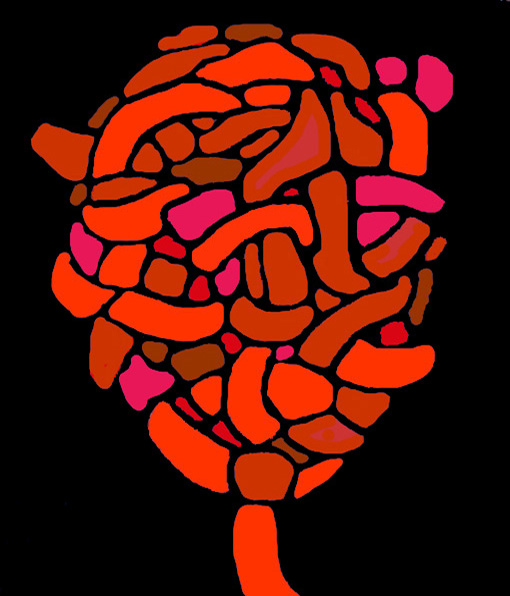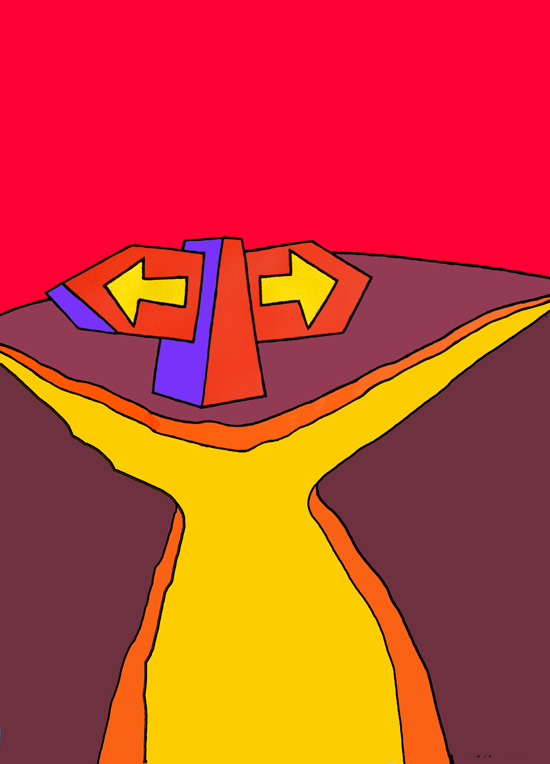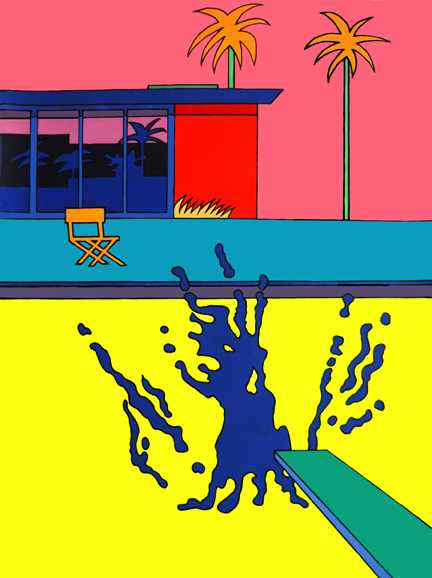7 - The Parapraxis of a Chance Meeting at Heathrow Airport of RD Laing and Noam Chomsky.
1999 - Acrylic on Paper - 167cm x 152cm
Catalogue Ref: 990108
This, from Wikipedia, may be of some use:
"A Freudian slip, also called parapraxis, is an error in speech, memory, or physical action that is interpreted as occurring due to the interference of some unconscious ("dynamically repressed") subdued wish, conflict, or train of thought guided by the super-ego and the rules of correct behaviour."
"They reveal a "source outside the speech". The concept is thus part of classical psychoanalysis."
"Slips of the tongue and the pen are the classical parapraxes, but psychoanalytic theory also embraces such phenomena as misreadings, mishearings, temporary forgettings, and the mislaying and losing of objects."

